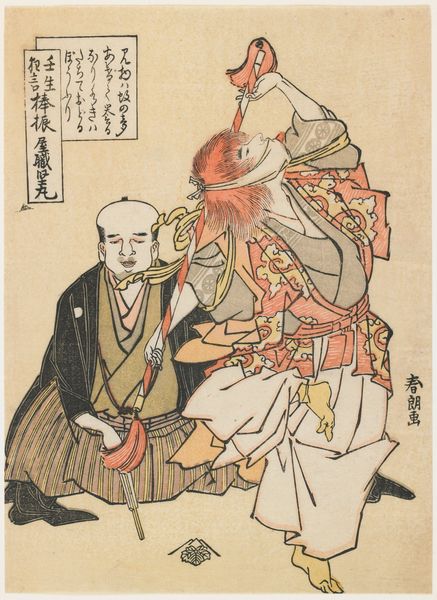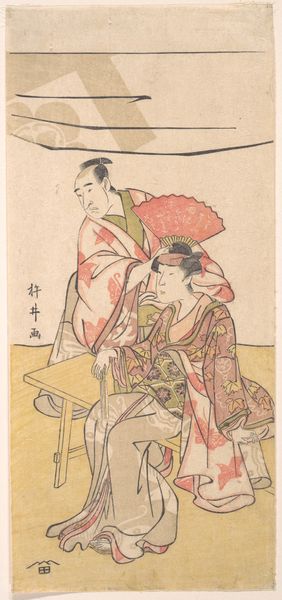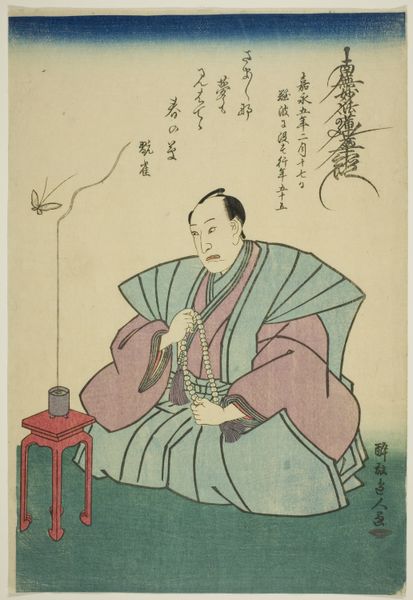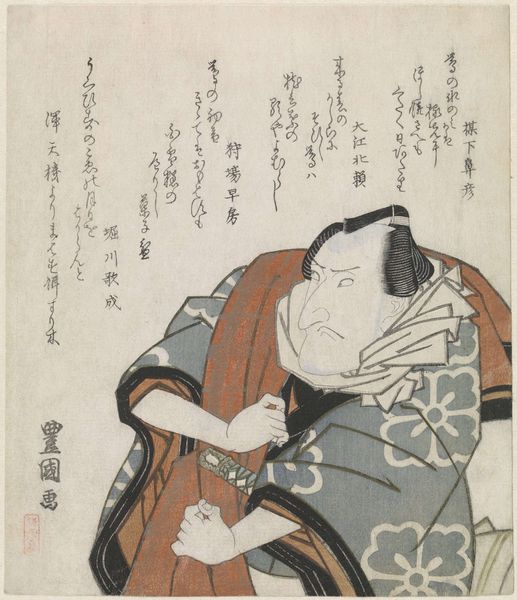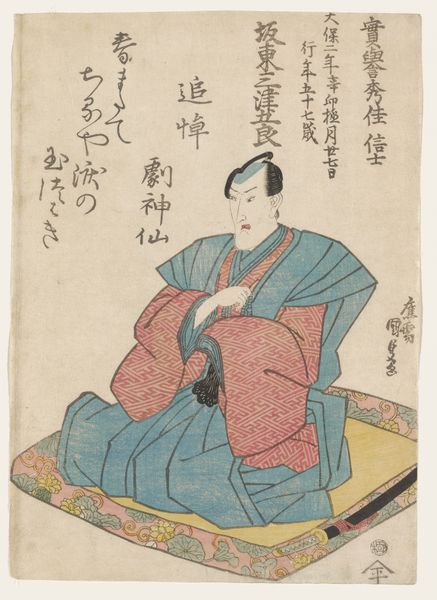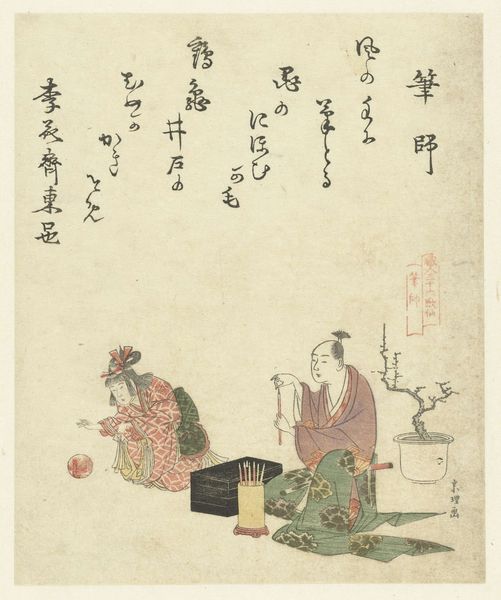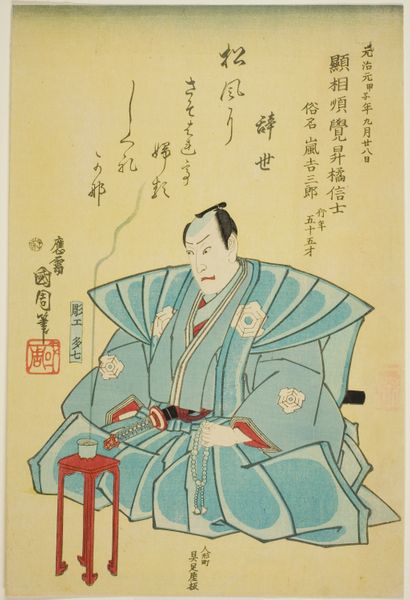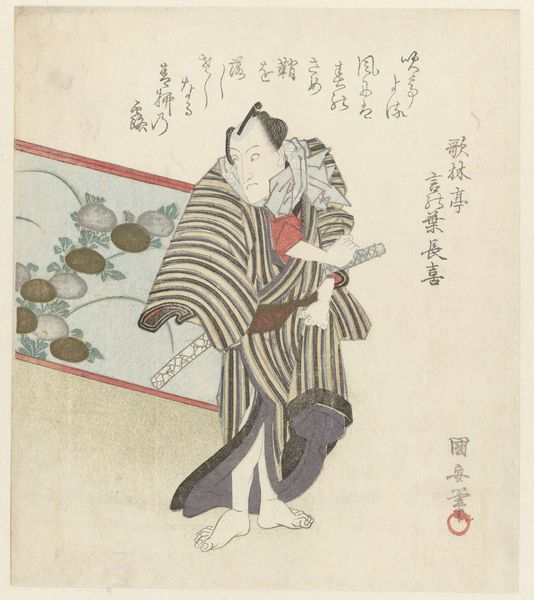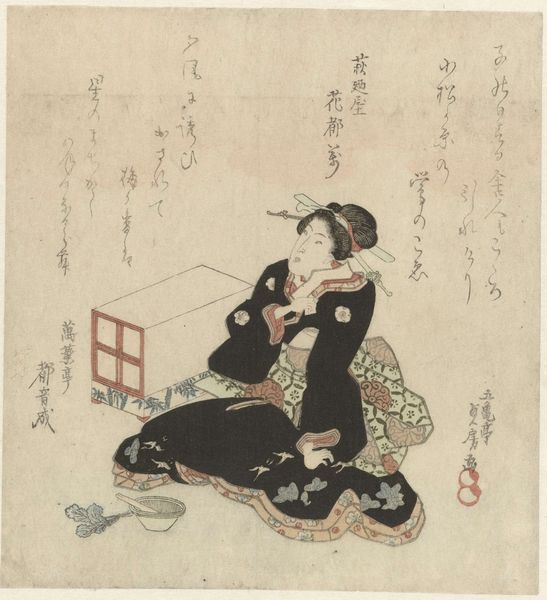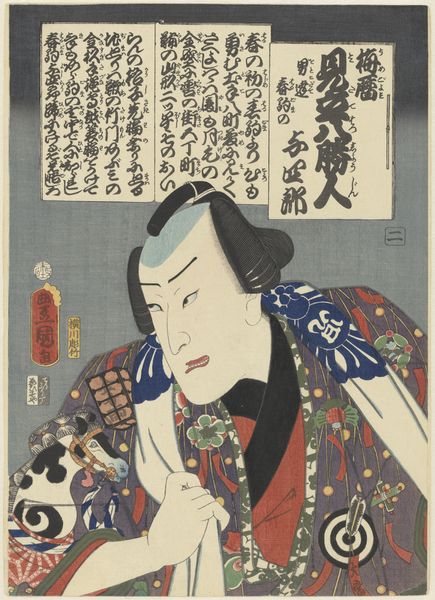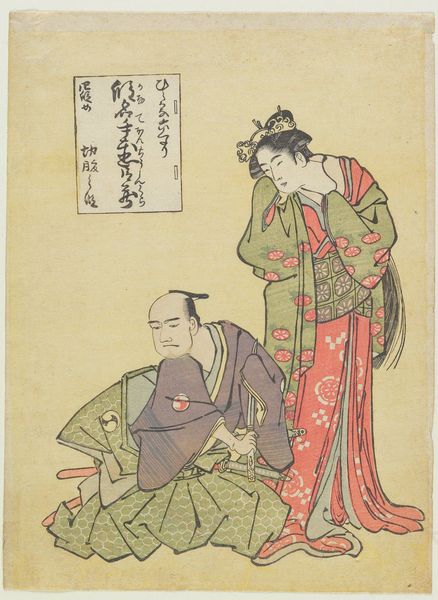
print, textile, woodblock-print
#
portrait
# print
#
asian-art
#
textile
#
ukiyo-e
#
figuration
#
woodblock-print
#
calligraphy
Dimensions: height 385 mm, width 258 mm
Copyright: Rijks Museum: Open Domain
Curator: Let's discuss this woodblock print by Utagawa Kunisada, dating back to 1815. It's titled "Nakamura Shikan I na zijn laatste voorstelling", held at the Rijksmuseum. The image shows a seated figure in elaborate dress next to a table covered in stage makeup and hairpieces. What's your initial impression? Editor: Stark and theatrical. The precise lines create a mood of focused intensity, yet the palette feels muted, lending a sense of somber reflection to the portrait. Curator: Indeed. Kunisada’s piece captures the actor Nakamura Shikan I preparing backstage after what would be his final performance. It's an ukiyo-e print, which was a significant form of artistic expression amongst the merchant classes, depicting scenes from everyday life as well as more elaborate entertainment. What does the work say to you about Japanese society at the time? Editor: It beautifully captures the artifice of the performance. I'm drawn to the placement of objects—the makeup and hair next to the seated figure tell an interesting narrative of a ritual being performed. Do you see a subversion or even a questioning of the societal hierarchy being suggested here? Curator: I see the questioning residing within the representation of actors themselves. The print portrays the human side of an actor known for his powerful stage presence. The rise of figures like Nakamura challenged existing hierarchies through art and culture. Also, let's consider the details—the subtle gradation of colour in the robe, the meticulous depiction of the table—each signifying a conscious choice by the artist. Editor: Right, I find myself looking closely at the actor’s face. There’s a real ambivalence in those fine lines, the tension is almost palpable in his downward gaze. It's very detailed! It strikes me as a portrayal of mortality as well. Curator: The work invites viewers to acknowledge not just Nakamura’s personal narrative, but also that of actors as performers operating within particular socio-economic constraints and power structures of Edo period Japan. We see beyond the stage persona to a figure vulnerable and mortal. Editor: Agreed. Reflecting on the combination of stark formal composition and introspective thematic content makes it a captivating piece that stays with you. Curator: I agree, thinking about its significance, the piece is evocative on many levels—formal, biographical and sociocultural—providing a layered engagement.
Comments
No comments
Be the first to comment and join the conversation on the ultimate creative platform.
